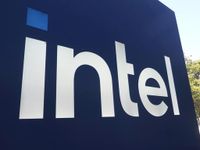In a move that has sent ripples across the global technology and political landscape, Intel Corporation and the Trump administration announced on August 23, 2025, a landmark agreement granting the U.S. government a nearly 10% stake in the legendary American chipmaker. The deal, valued at $8.9 billion, sees the government purchasing 433.3 million newly issued Intel shares at $20.47 apiece—a price notably below market value, giving taxpayers a discounted entry into one of the world’s most critical industries.
The funding for this investment draws from $5.7 billion in CHIPS and Science Act grants and $3.2 billion from the Secure Enclave national security program. Combined with $2.2 billion in CHIPS grants already received by Intel, the total federal investment in the company now soars to $11.1 billion, making Intel the largest beneficiary of the Biden-era CHIPS Act, according to Folsom Times and TechCrunch.
The government’s stake, while substantial, is designed to be passive. There will be no government representation on Intel’s board, and Washington has agreed to vote in line with Intel’s board on most matters. The deal also eliminates claw-back and profit-sharing provisions attached to earlier CHIPS funds, providing what Intel describes as “permanency of capital” as it pushes forward with its ambitious U.S. expansion plans. In a further twist, the government also receives a five-year warrant to purchase an additional 5% of shares, but only if Intel cedes majority control of its foundry business—a safeguard against foreign influence, as highlighted by AINVEST.
Intel CEO Lip-Bu Tan, who took the helm in March 2025 following the ouster of Pat Gelsinger after a historic $18.8 billion loss in 2024, expressed gratitude for the administration’s confidence. “As the only semiconductor company that does leading-edge logic R&D and manufacturing in the U.S., Intel is deeply committed to ensuring the world’s most advanced technologies are American made,” Tan said. He added, “We are grateful for the confidence the President and the Administration have placed in Intel, and we look forward to working to advance U.S. technology and manufacturing leadership.”
President Trump, who announced the deal on Truth Social, called it “a great Deal for America and, also, a great Deal for INTEL.” In his words, “It is my Great Honor to report that the United States of America now fully owns and controls 10% of INTEL, a Great American Company that has an even more incredible future. The United States paid nothing for these Shares, and the Shares are now valued at approximately $11 Billion Dollars.” Trump also described the agreement as the outcome of a direct exchange with CEO Tan, stating, “I said, I think you should pay us 10 percent of your company. I said, I think it would be good having the United States as your partner. He agreed, and they’ve agreed to do it.”
This partnership comes at a pivotal moment for Intel. Once the undisputed leader in semiconductors, the company has struggled in recent years, missing the smartphone boom and falling behind in the artificial intelligence race to rivals Nvidia and AMD. Nvidia’s market capitalization now exceeds $4 trillion, while Intel’s sits just above $100 billion. Amid fierce competition, Intel has embarked on a sweeping restructuring, including a plan to cut about 15% of its workforce—roughly 15,000 jobs—globally. This has hit local communities hard, particularly in Folsom, California, where more than 900 layoffs have been confirmed in the past year alone.
Despite these challenges, Intel remains a cornerstone of American technology. Over the past five years, the company has invested $108 billion in capital projects and $79 billion in R&D—much of it focused on U.S. manufacturing and process technology. Its $100 billion expansion plan includes new fabrication plants in Arizona, expected to begin high-volume production later in 2025, featuring what Intel calls “the most advanced semiconductor manufacturing process technology on U.S. soil.”
Industry leaders have rallied behind the deal. Microsoft’s Satya Nadella stated that Intel’s renewed U.S. focus would “benefit the country and broader technology ecosystem for years to come.” Michael Dell, founder of Dell Technologies, called Intel “the most important company to a strong and resilient U.S. semiconductor industry.” HP CEO Enrique Lores described this as “a defining moment for great American companies to lead the world in cutting-edge technologies,” while Amazon Web Services’ Matt Garman praised semiconductors as “the bedrock of every AI technology and cloud platform,” lauding the administration’s effort to usher in “a new era of American innovation in partnership with American companies.”
Not everyone is convinced. The deal has sparked fierce political debate. Sen. Rand Paul, R-Ky., called it “a terrible idea” and “a step toward socialism.” On the other hand, Sen. Bernie Sanders, I-Vt., voiced support, arguing that “taxpayers must get a return on the incentives granted to Intel.” Legal scholars have raised questions about the constitutionality of such deep government intervention in private enterprise, especially following recent deals with Nvidia and AMD, which were granted special licenses to export chips to China in exchange for 15% of their revenues from that market.
The CHIPS Act itself, passed in 2022 to bolster domestic semiconductor manufacturing and reduce reliance on Asian supply chains, has been a point of contention. While Intel is among its largest beneficiaries, Trump has repeatedly criticized the law, urging Republicans to repeal it—even as his administration leverages its provisions for this very agreement. As TechCrunch noted, the irony is not lost on political observers.
For Intel, the elimination of claw-back provisions offers much-needed financial stability. The government’s passive role, coupled with the warrant mechanism, introduces a delicate balance between public oversight and private innovation. As AINVEST observed, this structure is unprecedented in the U.S., resembling European models of state equity but with an American twist—no board seats, but a clear trigger for intervention if national interests are threatened.
Intel’s stock responded positively, rising 6-7% on the day of the announcement—a sign that investors see the government’s backing as a stabilizing force, at least for now. Yet, the long-term implications remain uncertain. The government’s involvement ties Intel’s future more closely to decisions in Washington, with potential ripple effects for local economies like Folsom, where Intel’s presence has shaped the city’s growth and identity for over four decades.
Ultimately, the U.S. government’s stake in Intel marks a new chapter in American industrial policy—a bold experiment in blending public capital with private enterprise to secure the nation’s technological future. Whether this partnership proves to be a strategic masterstroke or a cautionary tale will depend on Intel’s ability to deliver on its promises, the stability of U.S. policy, and the ever-shifting tides of the global semiconductor industry.


